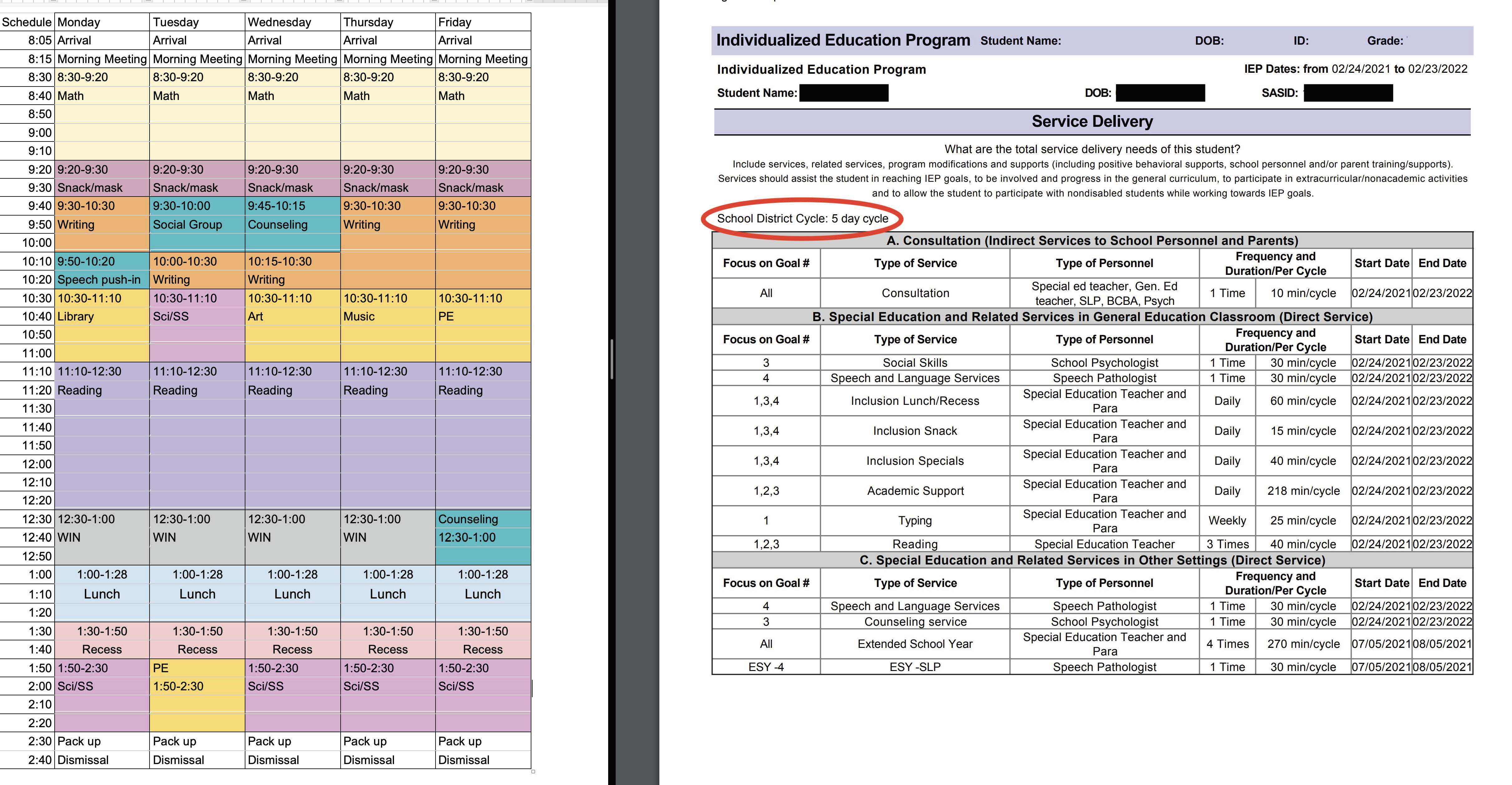Your child has an an individualized education program (IEP). You worked tirelessly with the Team to define appropriate services and supports for your child. However, in order for your student to make progress, the IEP must be implemented with fidelity. But how do you know your child will receive everything that was agreed upon? Today I will explore what happens when IEP services are not provided.
When services might be missed
This question often comes up in terms of missed services at the beginning of the school year as schools finalize schedules. Related services such as speech therapy, counseling, and even small-group reading instruction may not begin until the second or third week of school. Missed services can also be an issue during school holidays and 1/2 days. For those unlucky enough to have services scheduled on a Monday, the time can really add up. Unfortunately this is accepted practice state-wide; though, it is not supported by special education laws and regulations.
When IEPs must be in effect
First, it is important to note that federal special education regulations require IEPs to be in effect at the beginning of the school year. Moreover, the regulations require anyone responsible for implementing the IEP (teacher, special educator, related service providers, etc.) to have access to the IEP. They must be informed of their specific responsibilities related to implementing the IEP, including the accommodations, modifications and supports that must be provided for the child. 34 CFR 300.323. The COVID-19 pandemic prompted reminders by the Department of Education’s Office of Special Education and Rehabilitative Services (OSERS) that there is no exception allowing schools to pause IEP services and the delivery of a free appropriate public education (FAPE). Essentially, a FAPE is required every day that the school is open.
Ensuring services are provided
So what happens when school practice conflicts with special education procedural requirements?
- Determine which services your child should be receiving by taking a look at the Service Delivery Grid. It is located towards the end of the IEP, and describes how often and how long (frequency and duration) services will be provided within the school’s cycle. A cycle may be for 5 days, corresponding with the school week, or 6 to 7 days based on a school’s schedule rotation. This means a service that is only once a cycle for 45 minutes will be delivered less frequently.
- Request a copy of your child’s schedule of services to compare to the grid. You may consider requesting a whole-class schedule to double check if there is anything your kiddo may be missing out on.
- Reach out to your special education liaison or team chair to ask about a plan for missed time. Does your school have procedures in place to monitor whether the IEP is being implemented as planned?
- As holidays near, consider requesting the day and time the service will be made up in order to prevent regression.
- Consider whether further action is needed.
Help is available
If you believe your child is frequently missing services defined in the IEP, you may consider reaching out to a special education advocate or attorney to explain your rights. The most important thing to consider is whether or not your child is making progress. If gaps in delivery are preventing your child from making meaningful progress then you may be entitled to compensatory services. As always, if you have any questions or concerns, contact me at: kim@massieplawyer.com

